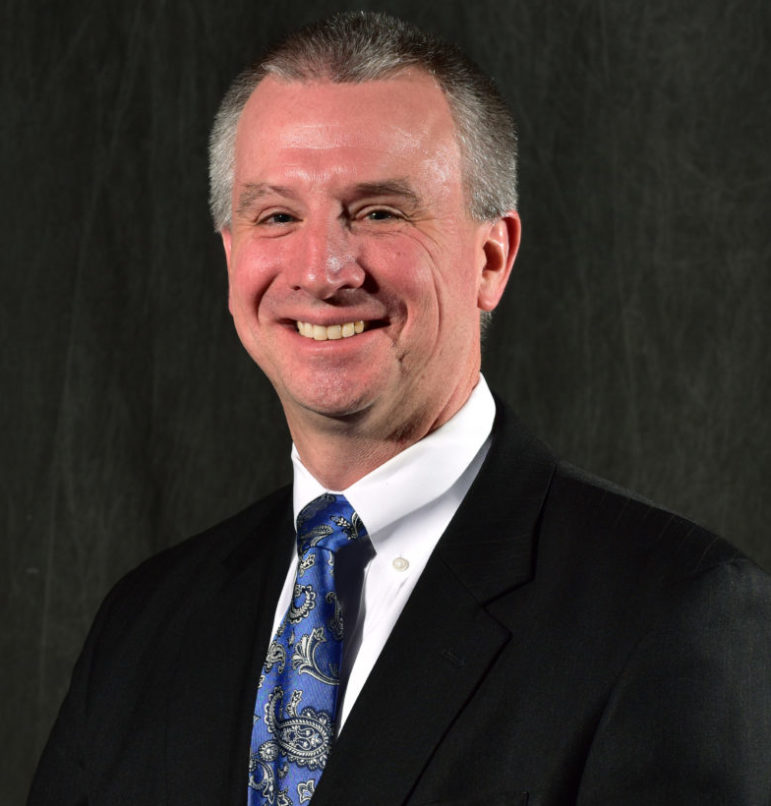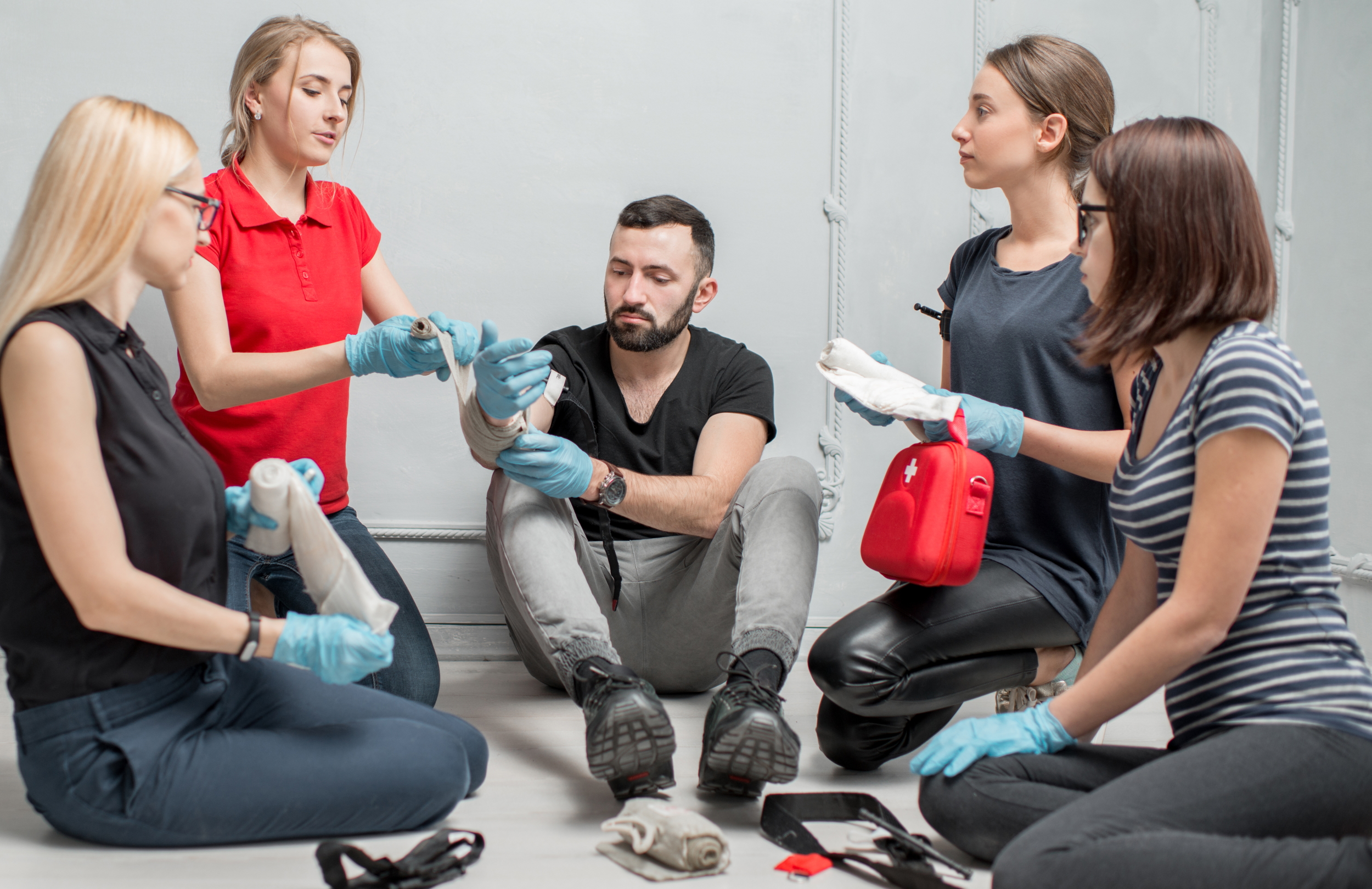Emergency wound management such as that taught through the American College of Surgeons’ Stop the Bleed program, its proponents say, offers gun-injured individuals a better shot at survival.
For starters, trainees are instructed on how to recognize when bleeding is eminently life-threatening.

Dr. Shane Speights, dean of the NYIT College of Osteopathic Medicine in Jonesboro, Arkansas.
“If it’s in a major artery — whether it’s in your chest or your arm or your leg — you’re going to see blood. We call it audible blood, which means you can hear it come out and hit the floor,” said Dr. Shane Speights, dean of the New York Institute of Technology College of Osteopathic Medicine at Arkansas State University’s Jonesboro campus. “It’s the blood that’s going to kill you in five minutes or so. That’s where having somebody trained at this … [is] going to be a game-changer.”
Trainees also are taught critical aspects of human physiology. For example, the body of an adult weighing 150 to 180 pounds contains about 1.2 to 1.5 gallons of blood, with blood amounts varying based on sex and body size. More blood circulates through men’s bodies and less through those of children.
Helping gun-injured people avoid lethal blood loss requires having a clear presence of mind when responding to what is a shocking situation.
[Related story “More students and teachers are being trained to triage gunshot victims“]
“It improves, not just the outcome for the patient, it improves, hopefully, the psychological impact of seeing this violence, because you are empowered to react to this violence,” said Dr. Loren Bach, a critical care physician at Mercy Hospital in St. Louis.

Dr. Loren Bach, Mercy Hospital St. Louis critical care physician.
Continued Bach: “Stop-the-bleed is a way to try and stabilize and temporize a dire situation and allow it time to get to us … to render treatment with the resources we have available.”
The push for more trainees capable of triaging wounds comes as gun violence has been surging nationwide, including violence caused by automatic and semi-automatic weapons. Those weapons accounted for up to 57% of firearms used in mass shootings, where more than one person was killed or injured, researchers at George Mason University’s Center for Evidence-Based Crime Policy concluded in 2017. They accounted for up to 12% of gun crimes overall; and up to 16% of gun crimes against police officers.
From 1994 through 2004, those researchers wrote, the federal government banned the sale and use of those weapons.
“These weapons are problematic because they are very destructive,” Bach said.
Now banned in seven of the 50 states, automatic and semi-automatic weapons were responsible for 25% of deaths and 76% of non-fatal injuries in all U.S. mass shootings between 2009 and 2018, according to Everytown for Gun Safety.
So far this year, there have been roughly 600 mass shootings in the United States, according to the Gun Violence Archive.
***
Award-winning health journalist Sandra Jordan’s byline has appeared in, among other publications, the St. Louis American, where she also was an assistant managing editor. Previously, she was a producer for TV newsrooms in Kansas and Missouri.
































